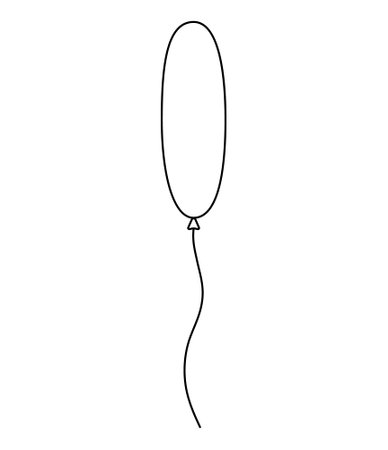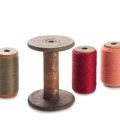Introduction to Divination in British Folklore
Divination, the practice of seeking insight or guidance from supernatural sources, has deep roots within British folklore. Across centuries, communities throughout England, Scotland, Wales, and Northern Ireland have relied on various divinatory tools and rituals to answer questions about love, luck, health, and fate. These customs are more than mere superstitions; they are woven into the cultural fabric, reflecting the beliefs and anxieties of generations. From ancient Druidic rites to village soothsayers interpreting omens, divination practices have continually evolved while maintaining their core significance. Today, whether through the swing of a pendulum or the casting of runes, these traditions persist as both folk memory and living practice, illustrating a resilient curiosity about the unknown that remains relevant in modern Britain.
2. Understanding Pendulum Divination
Pendulum divination, also known as dowsing or radiesthesia, is a method of seeking answers or guidance by interpreting the movement of a suspended weighted object—typically a crystal or metal pendulum—over a fixed point. In the context of British occult traditions, this practice has roots that intertwine with both folk magic and spiritualist movements. Practitioners believe the pendulum responds to subtle energies, subconscious cues, or spiritual influences, making it a tool for gaining insight into questions ranging from health concerns to lost objects.
How Pendulum Divination Works
The process involves holding the pendulum chain between thumb and forefinger, allowing it to hang motionless over a chart, map, or simply in open space. The diviner asks a question and observes the direction and type of swing: back-and-forth, circular, or side-to-side. Each motion is pre-assigned an answer such as “yes,” “no,” or “maybe.” This method is prized for its simplicity and portability compared to more elaborate tools.
Historical Context in British Occult Traditions
Pendulum divination gained popularity during the Victorian era’s fascination with spiritualism but also echoes earlier folk practices of dowsing for water and minerals in rural Britain. While not as widely documented as tarot or astrology, pendulums found a niche among cunning folk (local wise women and men) who blended Christian prayer with folk magic. Its use persisted into the 20th century among both occultists and amateur enthusiasts exploring parapsychology.
Typical Uses of Pendulum Divination in the UK
| Use Case | Description |
|---|---|
| Locating Objects | Finding lost items or even underground water sources—a tradition especially prevalent in rural communities. |
| Personal Guidance | Seeking yes/no answers on matters of health, relationships, or career decisions. |
| Spiritual Communication | Attempting to receive messages from spirits during séances or in mediumship circles. |
| Energy Clearing | Detecting “bad energy” in homes or personal spaces; sometimes used alongside rituals for cleansing. |
Overall, pendulum divination in the UK bridges practical folk uses with esoteric inquiry, embodying the blend of pragmatism and mysticism characteristic of much British folklore.
![]()
3. Traditional British Divination Tools
While pendulum divination has gained popularity in recent years, the United Kingdom boasts a rich tapestry of other traditional divination tools that have deep roots in its folklore and cultural heritage. Among the most well-known are tarot cards, tea leaf reading (tasseography), runes, and scrying, each offering unique methods for seeking insight or guidance.
Tarot Cards
Tarot cards, though originating from continental Europe, found firm footing in British occult circles during the Victorian era. Today, they remain a staple in spiritual shops and local markets across the UK. Readers interpret complex spreads of illustrated cards to uncover hidden truths or future possibilities, weaving symbolism with intuition—a practice often featured at British folk festivals and psychic fairs.
Tea Leaf Reading (Tasseography)
Tasseography is perhaps one of the most quintessentially British forms of divination. After finishing a cup of loose-leaf tea, the drinker examines the patterns left by the leaves at the bottom of the cup. The symbols are interpreted according to traditional guides or family lore. This method is especially associated with Scottish and English traditions, sometimes practised informally at home or more formally at community gatherings.
Runes
Runic divination draws on ancient Norse and Anglo-Saxon traditions, reflecting the historical influence of Viking and early Germanic settlers in Britain. Runes—inscribed stones or wooden pieces—are cast and interpreted based on their position and orientation. Some practitioners in rural England and Scotland still use runes as part of broader folk magic practices.
Scrying
Scrying involves gazing into reflective surfaces—such as water bowls, mirrors, or even polished stones—to receive visions or messages. This practice can be traced back to Celtic Britain and has persisted through centuries, often appearing in tales of wise women and cunning folk who served as local seers throughout villages and towns.
Comparative Prevalence
Each tool reflects distinct strands within UK folklore: tarot and runes bring structured symbolism; tea leaf reading offers a homely, communal aspect; while scrying evokes mystical imagery from ancient legend. Compared to pendulum divination—which is often seen as more individualistic—these methods tend to involve richer communal traditions and storytelling elements that continue to shape British folk identity today.
4. Pendulum Divination Compared to Other Methods
When evaluating pendulum divination against other forms of divination in the UK, such as tarot, scrying, and runes, it is useful to focus on three key aspects: methodology, symbolism, and popularity. While each practice holds its own place within British folklore, their differences and similarities offer a valuable perspective on how they have been integrated into local spiritual traditions.
Methodology
| Divination Tool | Approach | Interaction Required |
|---|---|---|
| Pendulum | Direct yes/no or binary questioning; user interprets movement | Steady hand, focus, simple motions |
| Tarot Cards | Card spreads reveal narrative guidance; user interprets imagery | Shuffling, laying out cards, interpretative reading |
| Scrying (Crystal Ball) | Visualisation of images or symbols in reflective surface | Focused gaze, meditative state |
| Runes | Drawing or casting rune stones for symbolic answers | Physical casting or drawing, interpretive analysis of symbols |
Symbolism
Pendulum divination is often perceived as more mechanical and less visually symbolic than tarot or runes. The pendulums swing is interpreted through direction and amplitude rather than detailed imagery. In contrast, tarot cards are rich with archetypal symbolism rooted in both European and specifically British esoteric traditions. Runes connect directly to Norse and Anglo-Saxon heritage found in the UK, with each symbol carrying deep mythological meaning. Scrying relies on the seers ability to extract meaning from ambiguous shapes or visions—often linked to water and mirror folklore found across Britain.
Popularity in UK Folklore
| Practice | Cultural Integration in the UK | Contemporary Use |
|---|---|---|
| Pendulum Divination | Lesser-known in mainstream folklore but has niche followings within dowsing traditions and spiritualist circles | Gaining popularity among modern practitioners for personal guidance and energy work |
| Tarot Cards | Widespread cultural recognition; incorporated into Victorian occult revivals and still popular today | Mainstream tool for both casual and serious diviners; frequently featured in media and literature |
| Scrying (Crystal Ball) | Tied to Romani fortune-telling legends and historical court magicians; strong folkloric presence in stories and fairs | Seen as mysterious but iconic; more common in entertainment settings than private practice nowadays |
| Runes | Tied to Anglo-Saxon history; revived by 19th-century antiquarians and modern pagans alike | Niche practice with enthusiasts focused on heritage-based spirituality or reconstructionist movements |
Summary of Key Differences and Similarities
The principal similarity among these divinatory methods lies in their shared aim: to provide insight or answers beyond ordinary perception. However, pendulum divination stands apart due to its simplicity—requiring minimal symbolic interpretation compared to the story-rich processes of tarot or runes. While not as deeply embedded in traditional British folklore as some other tools, the pendulum’s appeal lies in its accessibility and adaptability for personal use. Each method contributes uniquely to the tapestry of UK spiritual practices, reflecting both historical roots and evolving beliefs.
5. Cultural Perceptions and Modern-Day Usage
In contemporary British society, the landscape of divination has evolved considerably from its folkloric roots. While pendulum divination and other traditional tools like tarot cards, tea leaves, and rune stones are no longer regarded with the same degree of mystical authority as in past centuries, they continue to hold a unique place within the cultural imagination of the UK.
Changing Attitudes Towards Divination
Within modern Britain, divinatory practices are often approached with a blend of curiosity, scepticism, and nostalgia. Pendulums, for instance, are frequently seen as accessible entry points for those interested in spiritual exploration but not necessarily committed to any particular esoteric tradition. In contrast, tarot readings and tasseography (tea leaf reading) maintain a strong association with both historical British customs and popular culture—think of fortune-telling at fairs or references in literature.
The Role of Skepticism and Rationalism
Given the UKs strong traditions in science and rational inquiry, many Britons approach divination with a healthy dose of scepticism. However, this does not diminish the practice entirely; rather, it reframes it. Many see pendulum dowsing or tarot reading as forms of introspection or entertainment rather than genuine supernatural insight. The phrase “take it with a pinch of salt” is commonly used when discussing such matters among friends or family.
Practical Usage Today
Pendulum divination is occasionally used by individuals seeking personal guidance or reassurance on everyday questions, such as decision-making or self-reflection. Tarot readings are popular at social gatherings, holistic fairs, and even some high street shops in larger cities like London and Manchester. Tea leaf reading is less common but persists in certain rural areas and among communities keen to preserve their heritage.
Folklore Meets Modern Wellness
Interestingly, there has been a resurgence of interest in divinatory practices within the broader wellness movement. Pendulums and other tools are often marketed alongside crystals and mindfulness aids. This modern usage tends to focus less on predicting the future and more on fostering a sense of connection—whether to oneself, ones ancestors, or local history. In this way, while the cultural significance may have shifted, pendulum divination and its counterparts remain woven into the fabric of British life, blending tradition with contemporary sensibilities.
6. Folkloric Case Studies and Anecdotes
Exploring the living tradition of divination in the United Kingdom, one finds a tapestry of stories and historical anecdotes that highlight both the enduring appeal and the scepticism surrounding pendulum divination, as well as other methods such as scrying, tea leaf reading, and dowsing rods. These case studies not only illustrate how these tools were woven into local custom but also reveal the social attitudes towards their use.
Pendulum Divination in British Folk Practice
One notable account comes from rural Somerset in the early 20th century, where it was reported that village healers—often referred to locally as “wise women”—used pendulums suspended over maps to locate lost livestock or even missing persons. The pendulum’s swinging was interpreted as a direct line to unseen energies or spirits offering guidance. Oral histories collected by folklorists indicate that while some villagers consulted these practitioners out of genuine belief, others did so with cautious pragmatism, hedging their bets when rational solutions failed.
The Tea Leaf Reader of Lancashire
In contrast, the tradition of tasseography—tea leaf reading—found particular favour in industrial northern towns during the Victorian era. A frequently cited story involves a renowned tea shop in Lancaster where a proprietor would divine fortunes for patrons. Local legend holds that she predicted a mill accident, leading to her being sought after not just for entertainment but for serious consultation. This practice reflected both communal anxieties and the desire for hope amidst hardship, using everyday objects rather than specialised tools.
Dowsing Rods and Hidden Waters
Dowsing rods have long been associated with finding underground water sources—a crucial skill in many parts of rural Britain. In Devon, a 19th-century rector documented how farmhands would resort to dowsing when new wells were needed. While some clergy dismissed this as superstition, others noted its occasional success and acknowledged its place within the local knowledge system. This blurred the lines between folk belief and practical utility.
Scepticism and Social Commentary
Not all stories are uncritically supportive of divinatory practices. In Yorkshire folktales, references to tricksters exploiting gullible neighbours through feigned pendulum readings are common. Such anecdotes serve as cautionary tales, warning against credulity while underscoring a persistent fascination with the mysterious.
Together, these selected accounts demonstrate that pendulum divination and its counterparts have been regarded with a mixture of reverence, curiosity, and doubt throughout British history. Their roles have shifted over time—from tools of serious inquiry to subjects of folklore—but they remain an indelible part of the cultural landscape.


